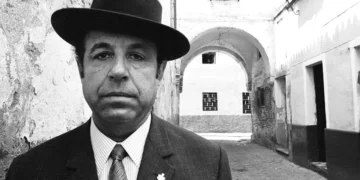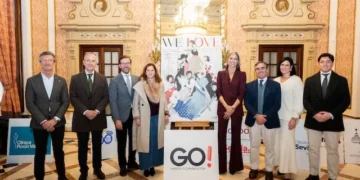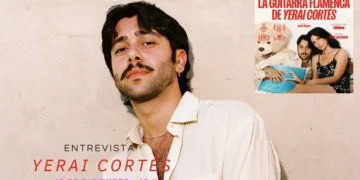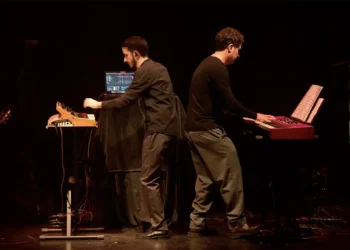
|
Thursday, June14th, 2007. Sala la Compañía, Jerez de la Frontera
|
|
It’s not something you see every day. Two major stars. Two generations representing two preeminently flamenco cities separated by 40 kilómeters, and united, not only by their geography, but by a longstanding, good-natured rivalry. When the train pulls out of Jerez headed south, the landscape suddenly changes, the earth becomes sandy and the light reflects differently. Jerez: wine, horses, the Morao dynasty of guitarists personified by Manuel Moreno Junquera “Moraíto”. Cádiz: light-hearted and gay, the smell of the sea, Juan Miguel Ramírez Sarrabia, “Chano Lobato”. Two of the most admired and beloved figures of flamenco today. It’s not possible to be more Jerez or more Cádiz than these men. t was a historic occasion in this year when Chano turns 80 and is the object of diverse tributes, most notably the one he is to receive in August at the Festival de Cante de las Minas de La Unión. It was a pity that even with free entrance thanks to the sponsorship of the BBK bank, the small theater didn’t quite fill up.But those of us lucky enough to be present, were able to enjoy an evening of potent flamenco essence. In the first part, the guitarist, playing in his own court, offered a mini recital displaying his honest, straightforward style spiced with a discreet serving of contemporary harmonies, just the right amount to update but not deform the guitar school developed by his family, most notably his father and uncle, Juan and Manuel Morao. Siguiriya, soleá, the signature tangos and bulerías. It’s not possible to be more Jerez or more Cádiz than these men Chano appears, and the outpouring of affection of all those present infuses him with strength to get on with what he has come to do. A thin thread of voice, perfectly suitable for the delicate tangos from his hometown, recalls Aurelio, Pericón, Manolo Vargas and simpler times when a young singer could not have imagined his art would continue to be relevant in a globalized, high cash-flow future. As he sings, his voice becomes stronger and the years slough off with each delightful verse. When he finishes, the singer exclaims “I think I’m feeling stronger now!” and the applause tells him he’s right. Soleá with the flavor of Cádiz bay, and the specific play of syllables that characterizes Cádiz tumbles forth in a totally natural way.It’s a different flavor from that of Utrera or Jerez, a bittersweet sound that has always been the mark of cante from this part of the flamenco world.Alegrías – “let me tell you about Ignacio Espeleta…” – y no member of the audience can hold back a smile even before he begins – “…and so smashed, he couldn’t even sing ‘te veo doble’ or anything!” “You know how the flamencologists are so wise..”, spoken with the utmost irony, and gestures to match, triggers laughter of complicity, and Chano tells us about la Malena, la Macarrona, Ignacio Sánchez Mejías and the people of the legenday show of Argentinita, Lorca and Falla, “Las Calles de Cádiz”, which is soon to be remembered and honored in a new work. Moraíto plays an opening in Do conjuring up all the sea spray that goes along with it, and Chano recreates his cantes as if it were the first time, the delightful verse of the Mirris and other old cantiñas. The last cante is a killer tanguillo, if indeed a tanguillo can ever be described as such, but the audience won’t let him get away without a closing fiesta backed up by local rhythm-keepers Rafa, Chícharo, Gregorio and Bo where Chano does his classy little dance and Moraíto’s long embrace is the most eloquent finale.
|

























